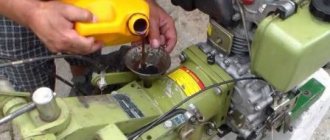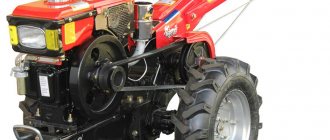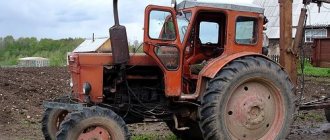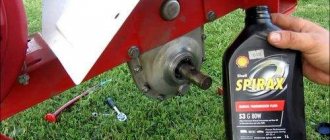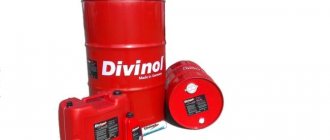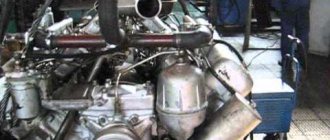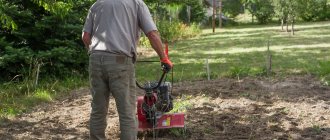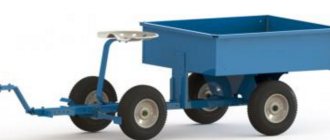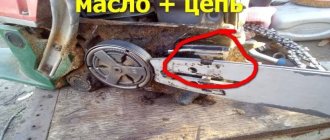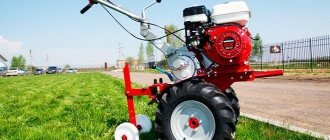Modern special equipment includes a lot of different components. There are main power parts, as well as auxiliary mechanisms and body devices. Each individual element is responsible for its work, which is why a full-fledged device performs the task assigned to it. Almost every modern equipment has in its design an element such as a gearbox. This mechanism has the purpose of uniformly converting and transmitting torque. In this case, it is necessary to consider in detail the gearbox of the Salyut brand walk-behind tractor.
If you have a fireworks walk-behind tractor, it’s worth studying the structure of the gearbox
Replacing oil seals
If maintenance is performed, then this element will also have to be replaced. Let us consider in detail how this procedure is performed:
- first of all, you need to remove the cutters from the device;
- Next, you need to unscrew the holding bolts;
- after this, the corresponding cover is removed;
- the old structural element is removed;
- a new oil seal is placed in its place;
- sealant must be applied on top.
After this, the lid is closed, the bolts are screwed in, and the removed cutters are installed in place.
It is worth noting that this procedure is recommended to be carried out in conjunction with replacing the fluid, which is carried out once every 100 hours of using special equipment.
Owner reviews
Doctor Mikhail, Kazyatyn:
“If you upgrade the Salyut 5 walk-behind tractor and move the gear shift knob closer to you, on the steering column, it will be much more convenient to work. A special kit for shifting gears specifically for Salyut has been sold for a long time. The necessary attachment, additional cutters, electric ignition can also be purchased separately, and Salyut 5 BS-1 will be no different from Salyut-100.”
Sotnik Nikolay, Poltava region:
“I tilled the soil with Salute 5 Briggs & Stratton, first mowed the grass with a walk-behind mower, then collected it with a rake, went through it twice with cutters, then made the beds with a plow, everything was fine. I tried to work with horse harrows, but the MB hardly pulls, it gets buried. Can heavy harrows for its weight. I'm thinking of thinning out the teeth. And so it cultivates normally. Well, if it’s virgin soil, then you still need to clear the grass from the shaft and take breaks.”
What and how much oil to fill
Many ignorant owners of special equipment are interested in the question of what kind of oil is poured into this part. Let's take a closer look at the criteria for choosing this component:
- the composition should provide maximum viscosity so that all working units do not rub against each other;
- this mixture must withstand elevated temperatures, since during operation there is strong friction of the parts;
- this component must have the necessary concentration indicators (preserve the composition for a long time);
- the oil should not be compressed (the composition must have a high density).
Do not pour oil into the gearbox
. As a rule, gear oil is used for special equipment, which provides the best performance indicators for such mechanisms. This consumable must be filled into the gearbox in accordance with the level. The amount of liquid for each individual node is different.
Important! The oil in the gearbox of the Salyut walk-behind tractor, or, as it is also called, a walk-behind cultivator, must be kept at a level, but not allowed to reach its maximum, otherwise there is a possibility of depressurization of the device and fluid leakage.
Characteristics
| Engine: | Briggs&Stratton Vanguard 6.5 |
| Number of speeds: | 1 forward/1 back |
| Plowing width: | 80/60/35 cm (6/4/2 cutters) |
| Plowing depth: | 25 cm |
| Clutch: | V-belt drive with tension roller |
| Gearbox: | mechanical, gear |
| Gearbox oil volume: | 1.1 l |
| Equipment: | Walk-behind tractor, 4 cutters for loosening the soil, pneumatic wheels, coulter |
| Engine's type: | gasoline, carburetor, 4-stroke |
| Cylinder volume: | 205 cc cm |
| Fuel tank capacity: | 4.1 l |
| Oil volume: | 0.6 l |
| Chassis system: | Single-axle, 2x2 wheel arrangement |
| Ground clearance: | 11…12 cm |
| Wheel size: | 39…41 cm (pneumatic) |
| Track: | Variable step adjustable |
| Track width: | Normal-260 mm; with extensions - 540 mm |
| Turning Radius: | 1.5 m |
| Dimensions: | 1510x620x1335 mm, no more, in working position |
| Weight: | 62…82 kg according to instructions |
| Manufacturer country: | Russia |
| Guarantee: | 1 year |
Attachments
In addition to direct work with rototillers, the Salyut 100 L-6.5 walk-behind tractor, when combined with a variety of mounted implements, successfully copes with many useful tasks on the farm.
About fifty different types of trailed implements from different manufacturers, including foreign and CIS countries, are easily connected to the walk-behind tractor. Installation is possible in the following ways:
- For the gearbox axle: various wheels, lugs, rototillers, weeder-ripper, weighting agents.
- To the trailer bracket of a walk-behind tractor directly or with a universal hitch: hillers, various adapter options, harrows, plows, single-row potato planter, blade, vegetable diggers, mini-carts.
- Using PWM: feed chopper, generator attachment, NMC pump, Terminator mower, Zarya rotary mower, snow blower, stationary woodworking equipment.
Pneumatic wheels
Pneumatic wheels (includes two wheels and extensions) - necessary for transporting the Salyut 100 L-6.5 walk-behind tractor and cargo using trolleys. Track parameters are 360 mm and 650 mm. When lengthening the axle, larger wheels are installed.
As an element holding the MTZ-05 walk-behind tractor in a normal (vertical) position when parked, you should use a special folding stop located in the front part of the walk-behind tractor. As a supporting element on the MB-1 “Neva” walk-behind tractor, you can use a coulter, the height of which should be set so that when the walk-behind tractor stops, it stands stably* with some tilt back, leaning on the coulter. Standard or additional support wheels (for walk-behind tractors) are very convenient, and for walk-behind cultivators they are extremely necessary.
When transporting, you should, if possible, go around even minor obstacles, firmly holding the walk-behind tractor by the handles of the control rod. If it is impossible to go around obstacles, then you need to overcome them very carefully, making an additional tilt of the unit towards you. This is especially important if the walk-behind tractor does not have a front stop, otherwise this may lead to it tipping forward.
Lightweight walk-behind tractors and motorized implements can be transported from place to place, which is done by two people; one person lifts the walk-behind tractor by the handles of the control rod, and the other by a special bracket or safety stop located in the front of the walk-behind tractor.
Control of the unit directly when performing certain technological operations should be directed by the operator to obtain high quality processing, ensure the safety of the operator and people in the operating area of the unit, and maintain the operability of the unit itself. When driving, the operator must always look at the lane in front of the unit in order to have time to notice an obstacle (rock, ditch, etc.) and determine the method (path) to overcome it. At the same time, the operator must monitor the condition of the working parts, their operation and monitor their integrity. If a malfunction is detected, the unit must be stopped and the malfunction eliminated.
Before starting to move, you should determine in advance the gear in the transmission in which the walk-behind tractor will move (processing will be carried out), start and warm up the engine. Leaving the clutch lever in the “off” position, set the selected gear (in the MB-1 walk-behind tractor, the gear in the transmission is engaged before starting the engine). Use the throttle lever to increase the engine speed and, slowly moving the clutch lever, smoothly engage the clutch. As a result, the walk-behind tractor starts moving, its speed is set by the operator, who moves the throttle lever accordingly. Although working with a walk-behind tractor does not require special training, certain skills are still required when working with each type of mounted or trailed implement.
Before milling the soil, after starting and warming up the engine, use the throttle lever to increase its rotation speed, then smoothly engage the clutch, after which the milling drum will begin to rotate, going deeper into the soil and simultaneously moving the unit. When milling, make sure that all the sprockets of the milling drum are aligned with the untreated area. If some of the stars move onto the already treated soil, the unit will begin to “lead” towards the treated area. In this case, it is necessary to apply lateral forces to the control handles and return the unit to the untreated area.
If the tillage depth begins to decrease (the cutter begins to crawl out of the soil), then you should press down on the control handles, which will lead to the deepening of the coulter and an increase in the depth of soil milling. If the cutter “buries” and does not move, it means that the opener has entered the ground too deeply and is “holding” the unit. In this case, it is necessary to lift the control handles and deepen the coulter. The operator must operate the motor-cultivator or walk-behind tractor without leaning forward or leaning back, that is, without pushing the unit forward or holding it. The most convenient position for the operator should be considered as shown in Fig. 7.3, which is achieved by appropriate adjustment of the position of the control handles and the coulter. In this case, the operator does not expend significant effort and is less tired.
After the first rut, it is recommended to stop the unit, turn off the engine and monitor the treated strip of soil, i.e., measure the depth of cultivation. If the depth is insufficient, the coulter must be lowered relative to its original position (usually the middle position in height). Then treat the soil again and check the result again. If it is not possible to achieve a certain processing depth by moving the coulter, a pair of milling sprockets is removed from the axis.
Processing of loose soils is carried out in the usual way with the maximum number of milling stars in one pass. It is recommended to process hard soils in 2-3 passes, each time increasing the depth of processing using a coulter. In this case, the structure of the treated soil is more uniform.
When plowing with a plow, the movement of the unit should be linear, and it should be controlled so that the plow does not bury itself in the soil or go deep. After the first furrow, you should also check the furrow and, if necessary, adjust the plow position in terms of plowing depth and working width. When plowing, difficulties may arise in controlling the unit due to increased slipping of one of the wheels due to the redistribution of pressure on them. Therefore, plowing should be carried out with the differential lock on, and you can control the unit by following it or being on the side, having first deployed the control rod. At the end of the headland, the differential lock should be turned off and the turn should be made at a reduced engine speed.
When working with a claw hiller, control difficulties may arise due to the fact that the stability of the unit moving in a straight line will be insufficient. This will entail the expenditure of additional operator effort to continuously adjust the movement of the unit along the furrow. You can increase driving stability by increasing the track width of the walk-behind tractor. In this regard, the MTZ-05 walk-behind tractor is most convenient (see Fig. 5.2).
When operating the MTZ-05 walk-behind tractor with a mower, the PTO drive must be turned on at low engine speed. The clutch must be disengaged. If the mower is operated with the walk-behind tractor in reverse (when the control rod is rotated 180°), then it must be remembered that the position of the walk-behind tractor control levers does not correspond to the original one. It is necessary to ensure that there are no objects in the path of the mower that could damage it. If the cutting device becomes clogged, it is necessary to stop the mower, turn off the engine and clean it. If the clogging is insignificant, then with the clutch disengaged and the mower running, you need to press the control handles - the mower will rise from the ground and self-cleaning will occur.
For transport units, after starting and warming up the engine with the clutch disengaged, you should engage the appropriate gear in which you intend to drive. Then the operator must release the brakes of the wheels of the unit and, increasing the engine speed, smoothly engage the clutch. This will allow the unit to move smoothly, without jolts. Sudden movements during operation can lead to increased wear on unit components and dramatically increase operator fatigue.
While the transport unit is moving, the operator must change the directional direction by lateral shifting the control rod handles in one direction or another. It is difficult to make sharp turns and especially U-turns from a seat, so the operator must stop the unit and get off the trolley. After this, grasp the handles of the control rod and turn the unit in the required direction. After making a sharp turn or U-turn, the operator can sit back in the seat and continue driving as normal.
When driving on the road uphill, downhill and on sharp turns, it is necessary to engage a lower gear so that the speed of the unit does not exceed 4 km/h, and the control rod must be held firmly in the hands. If you need to stop on a slope, you should simultaneously press the brake pedal or lever while disengaging the clutch. If it is necessary to park on a slope, the unit should be reliably braked with the parking brake and chocks should be placed under the wheels.
The trailer trolley should be loaded as evenly as possible. If the load is heavy and small, it should be placed above the trolley axle with a slight forward weight to improve the traction and grip qualities of the unit. When transporting large cargo or hay, it is advisable to tie the cargo with a rope. If the size of the load is such that the operator's visibility to the rear is obstructed, then driving, especially on the road, should be carried out with special precautions. If a turn must be made, then the unit must be stopped on the right edge of the road, look around and only after making sure that the path in both directions is clear, make a turn or turn. This should also be done in low visibility conditions.
How much to pour the mixture
The amount of liquid that is poured into the mechanism directly depends on a number of factors, namely:
- the volume that is set directly by the manufacturer;
- recommendations regarding the amount of oil;
- design features of the mechanism;
- the amount of liquid drained from the device.
Taking into account all these nuances, you can choose the optimal value at which the device will work best. As a rule, about two liters of transmission fluid are poured into this part of the walk-behind tractor. To determine the reliable amount of this component, you can take a wire 70 centimeters long, and then bend it and insert it into the mechanism. As a result, at least 30 centimeters should be smeared on it (this is considered the norm). If the indicator is less, then you need to add fluid.
Important! If maintenance is performed, it is necessary to fill the liquid to the level, otherwise rapid wear of a part such as the gearbox will be observed.
Changing the oil in a walk-behind tractor
You can change this consumable in the Salyut 5 walk-behind tractor yourself; you don’t have to contact specialists for this. Let's take a closer look at how this procedure is performed:
- first of all, it is necessary to warm up the mechanism so that the composition is less dense and can be easily drained;
- after this, the device must be turned off and the systematic replacement of fluid in the gearbox must begin;
- Next, you need to prepare a suitable transmission fluid, as well as an oil seal suitable for the device;
- Next, you need to unscrew the oil plug and drain all the oil present in the mechanism;
- if necessary, you can use flushing to remove all impurities and dirt from the assembly;
- then a new compound is poured in, and the oil seal is mounted (this must be done in accordance with the technology in order to maintain tightness inside the assembly).
After the maintenance has been carried out, it is necessary to run in for some time without loading the unit so that all parts can get used to the new lubricant.
Important! If flushing is used, then it is necessary to let the device work for some time (usually about an hour) so that all stuck-on impurities are removed.
Types and purposes
The reducer of the Salute walk-behind tractor in its structural integrity contains such elements as a boot, an oil seal, gears, bearings and a number of other elements. However, in this case it is necessary to understand the purpose of this mechanism and its varieties:
- non-separable converters (as a rule, these structural elements are mounted on relatively inexpensive equipment and, if they fail, must be immediately replaced);
- dismountable mechanisms (most often mounted on expensive special equipment, which makes them easier to repair, and there is no need to replace them if they fail).
The drive mechanism itself serves to receive torque from the engine, and then transmit it to the axle, while evenly distributing the load on each wheel. Also, these products can be divided into angular, worm and step-down, depending on their purpose.
Important! Regardless of what type of mechanism is installed, it is mandatory that the gearbox seal be replaced during maintenance, and the oil in the gearbox of a Salyut 100 walk-behind tractor or on any other device is also changed.

